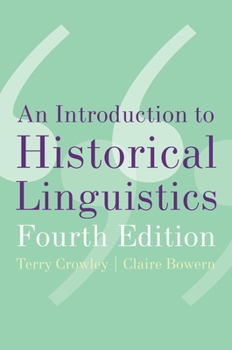An Introduction to Historical Linguistics, 4th Edition
Select Format
Select Condition 
Book Overview
All languages change, just as other aspects of human society are constantly changing. This book is an introduction to the concepts and techniques of diachronic linguistics, the study of language change over time. It covers all themajor areas of historical linguistics, presenting concepts in a clear and concise way. Examples are given from a wide range of languages, with special emphasis on the languages of Australia and the Pacific. While the needs of undergraduate students of linguistics have been kept firmly in mind, the book will also be of interest to the general reader seeking to understand langauge and language change. For this fourth edition, a number of new sections have been written, including many new problems and several datasets. Existing materials have been supplemented with new sections on grammaticalization, tonogenesis, morphological change, and using statistical methods in language classification.
Format:Paperback
Language:English
ISBN:0195365542
ISBN13:9780195365542
Release Date:February 2010
Publisher:Oxford University Press
Length:408 Pages
Weight:0.75 lbs.
Dimensions:0.9" x 6.1" x 9.1"
Customer Reviews
1 rating
as a textbook
Published by Thriftbooks.com User , 22 years ago
This is a textbook used for my introductory comparative and historical linguistics course. It is a good choice because it is easy to read and to understand. It provides foundation knowledge on languages formation then begins to discuss different topics covered in the comparative and historical linguistics. It gives plenty of exercises for practice and discussion. (unfortunately there is no solution provided) Some of them are pretty challenging and need some thoughts to solve them. I highly recommend this book you all of you.






